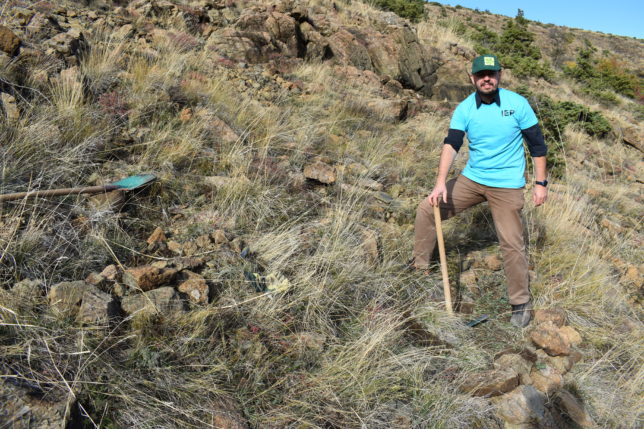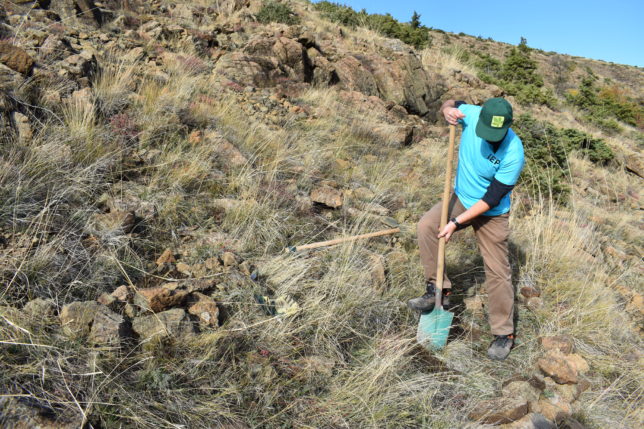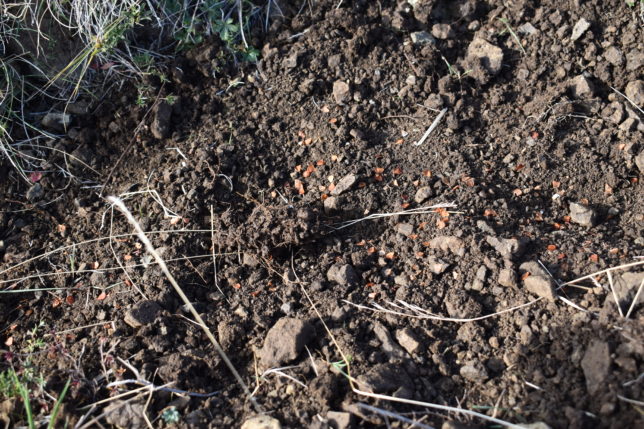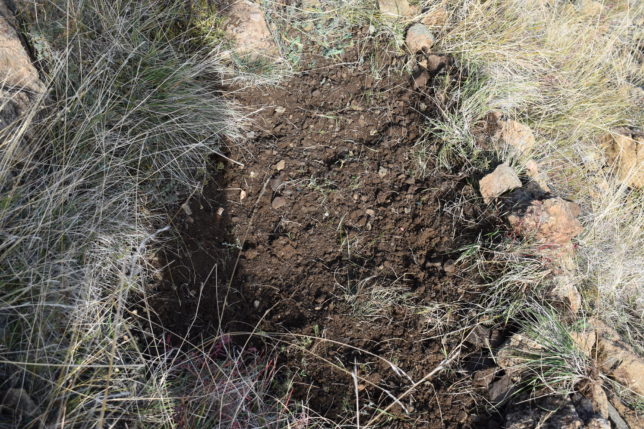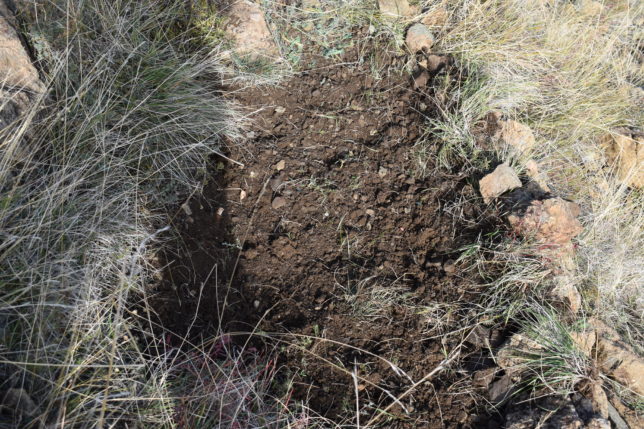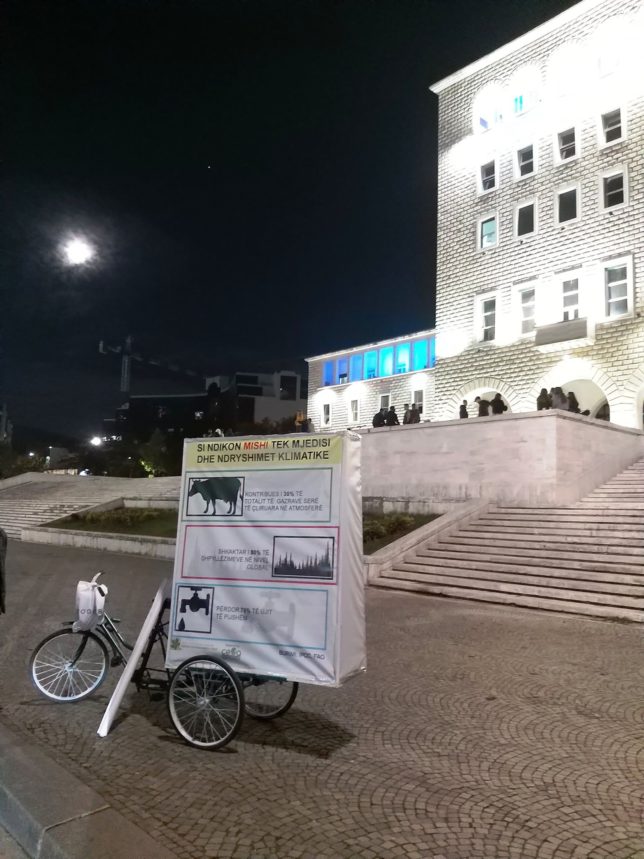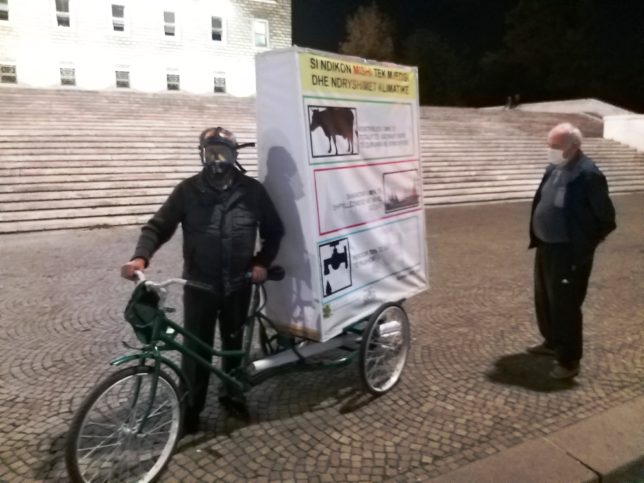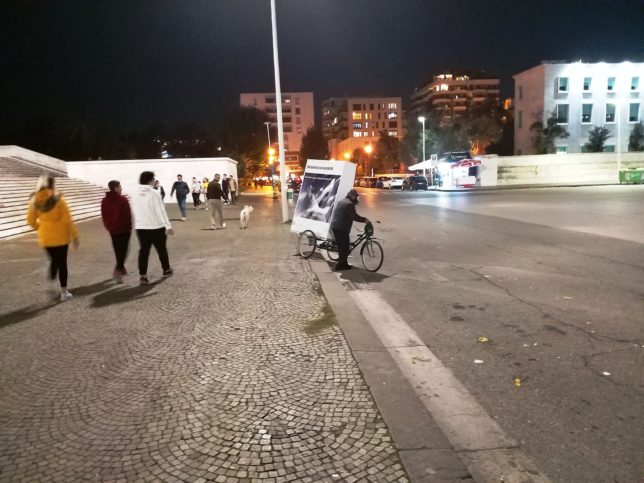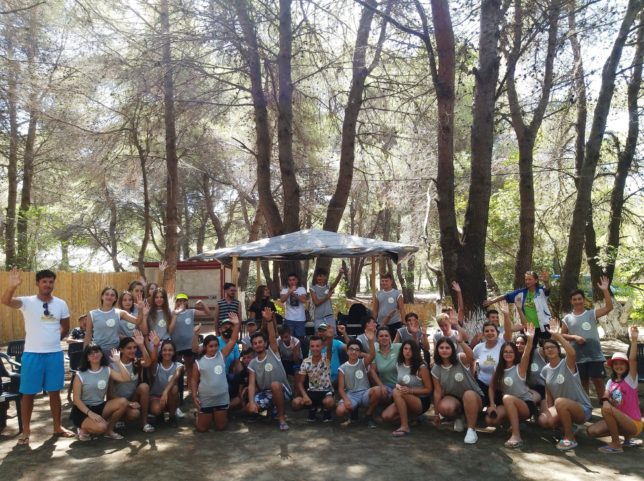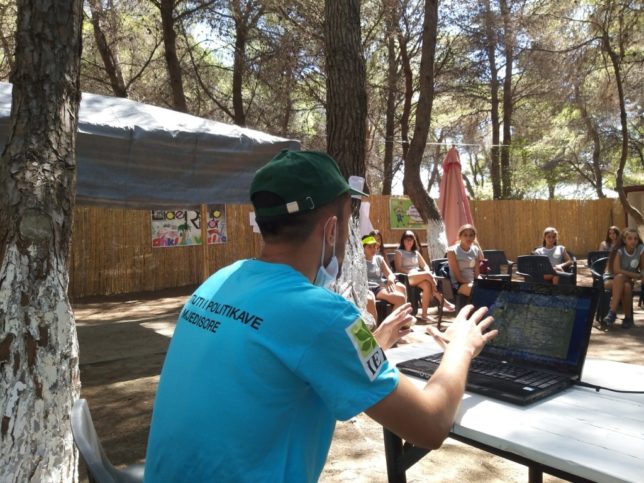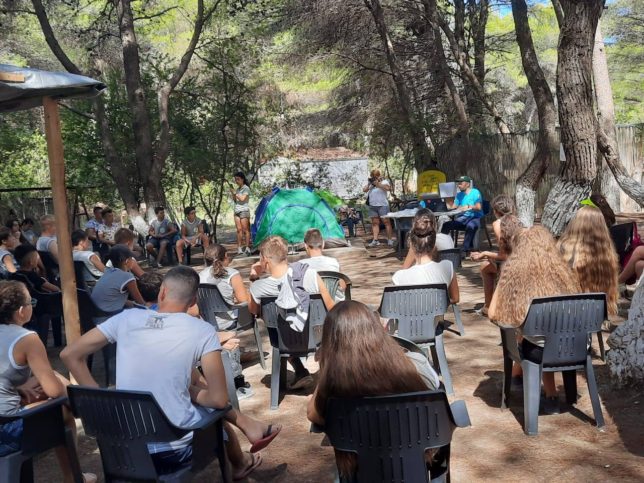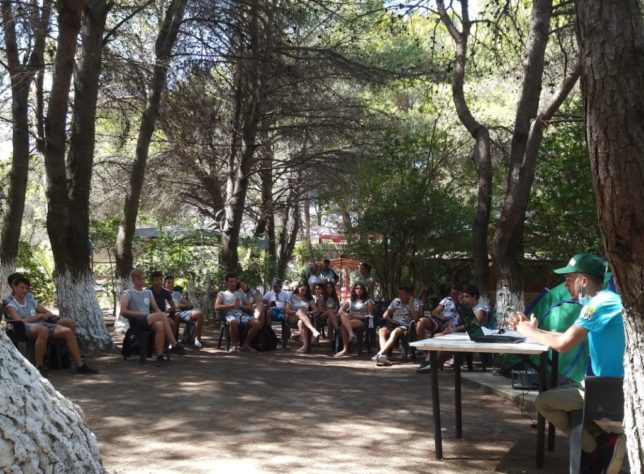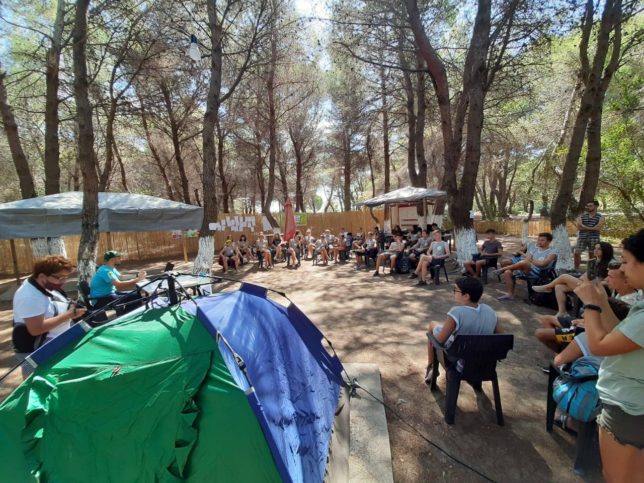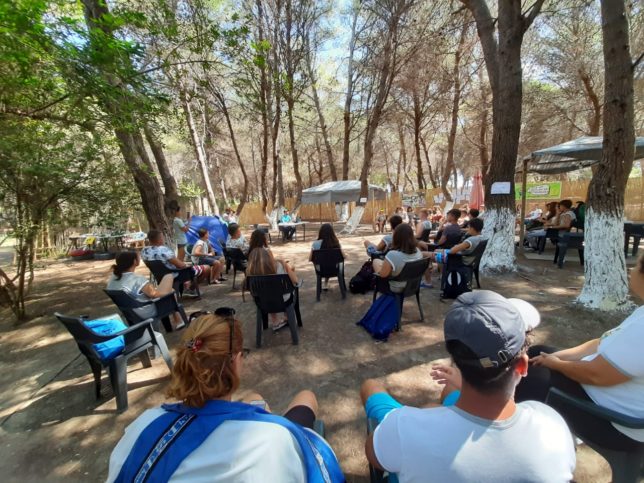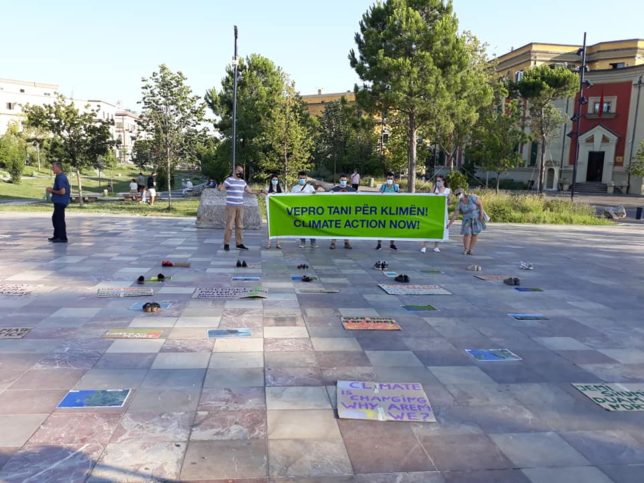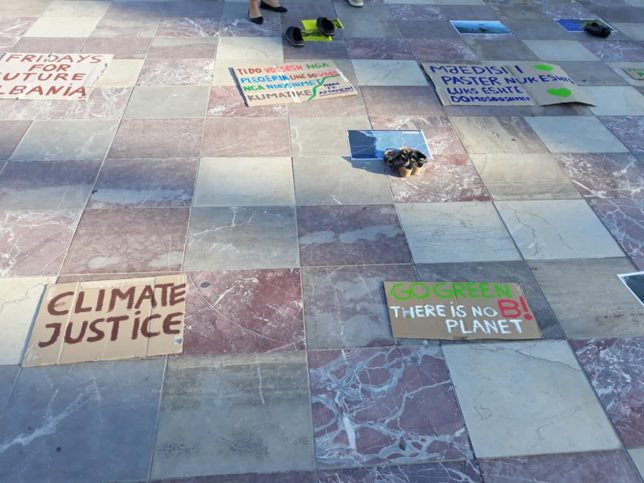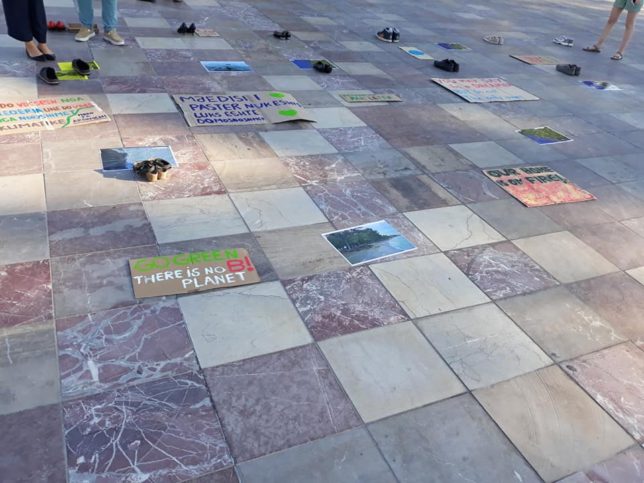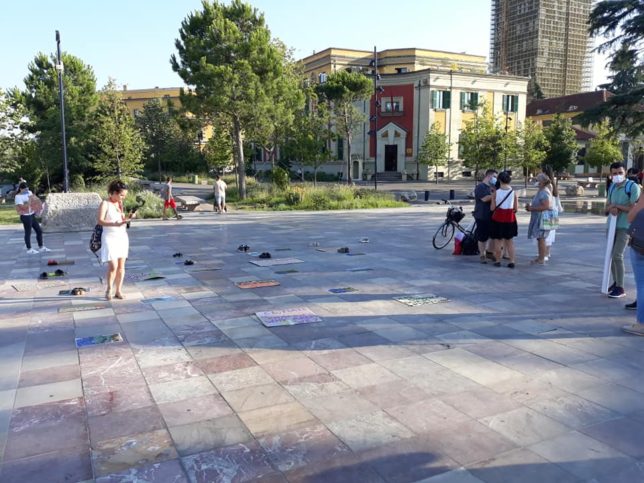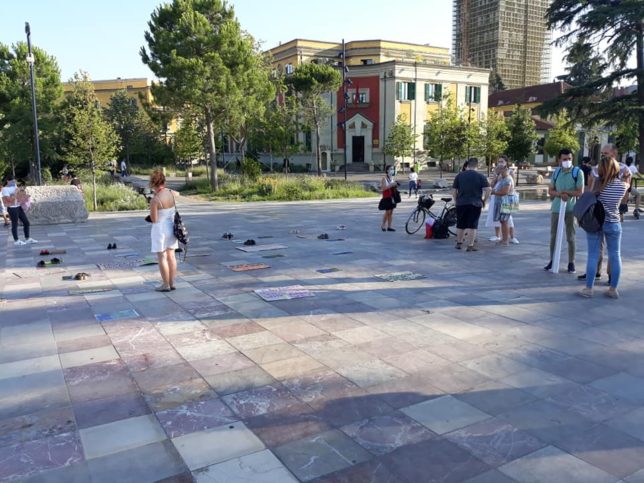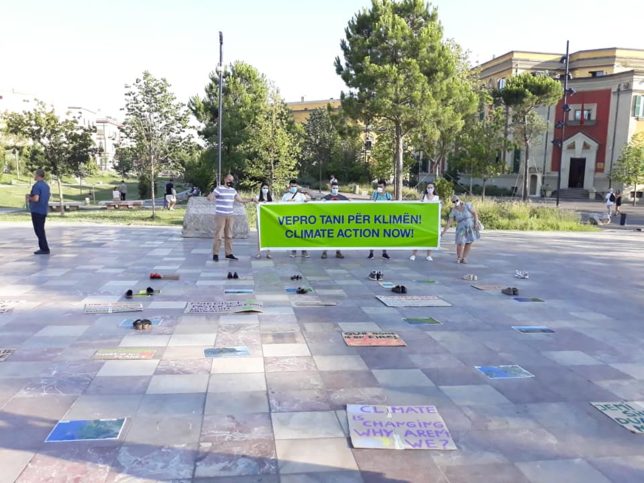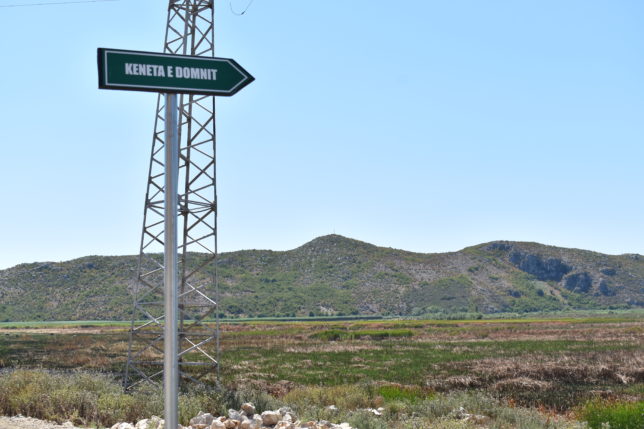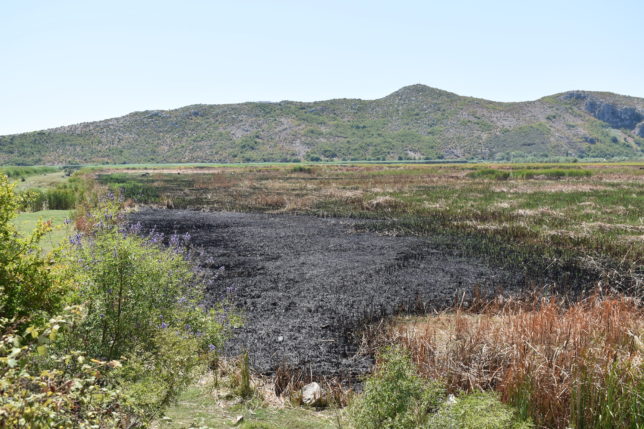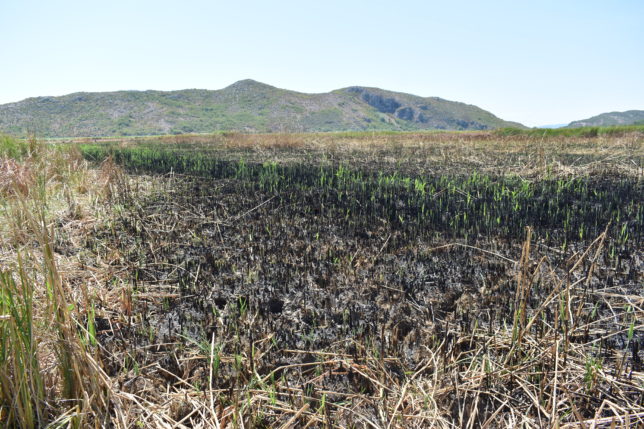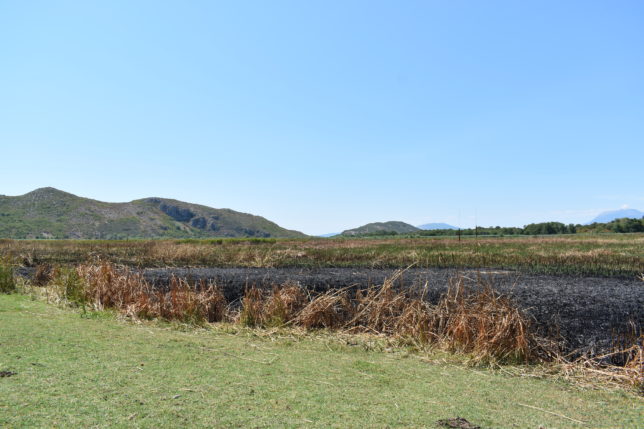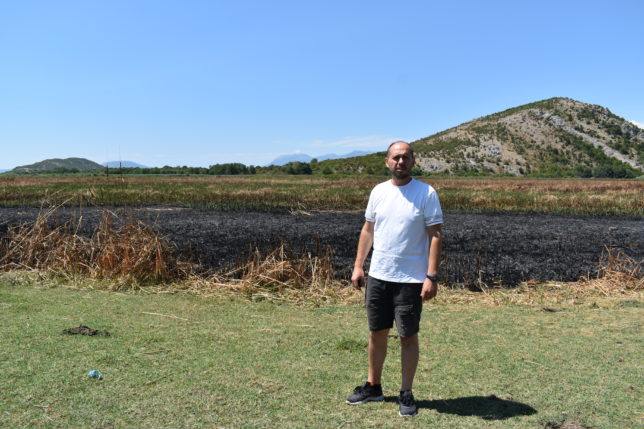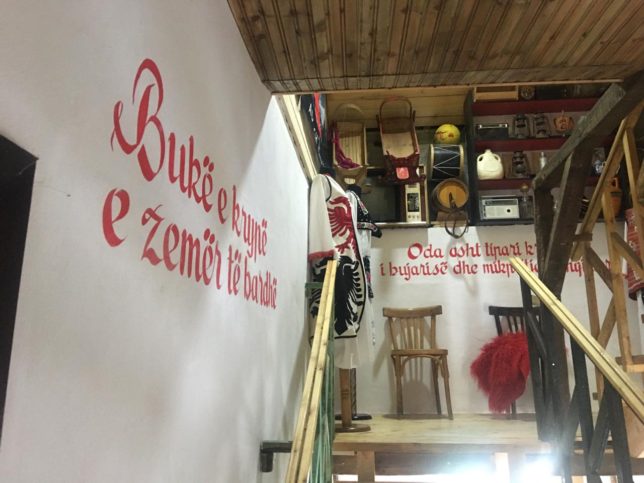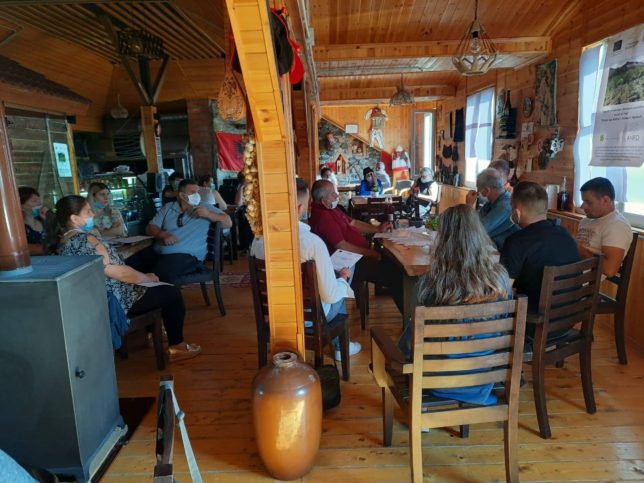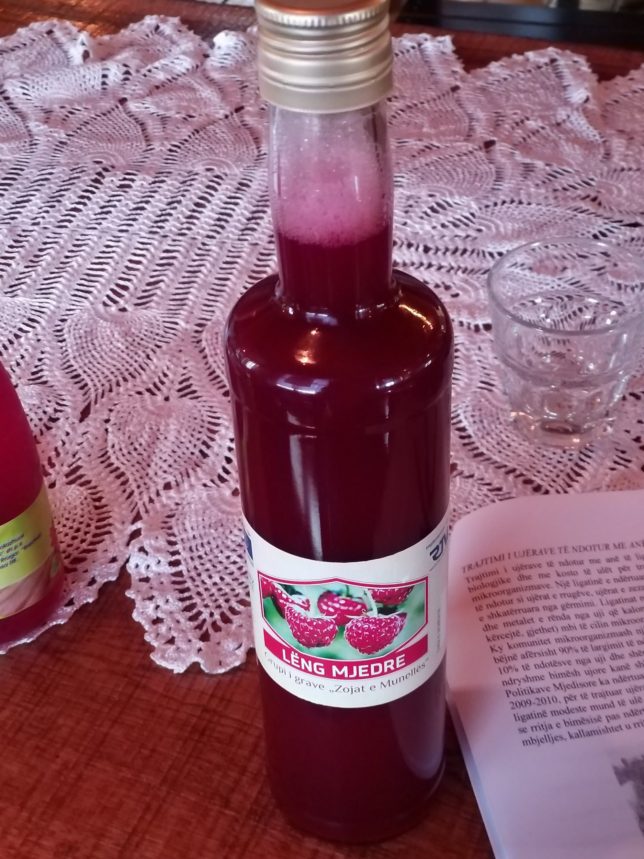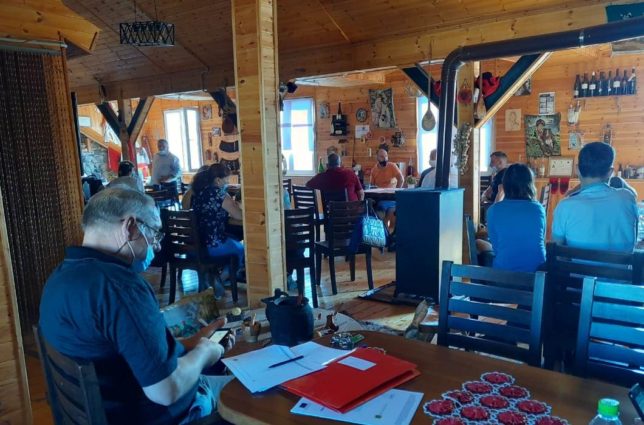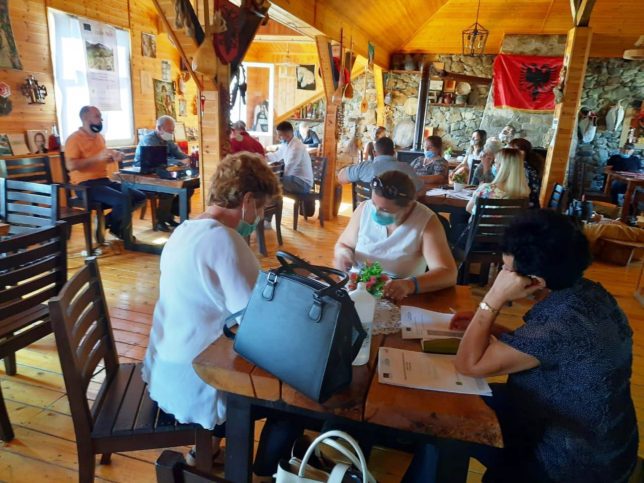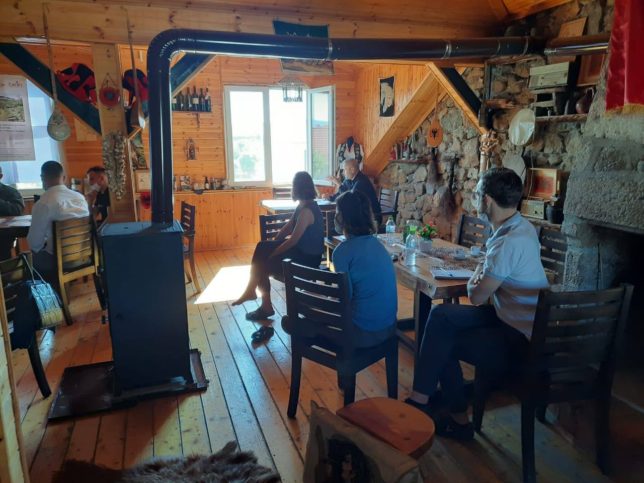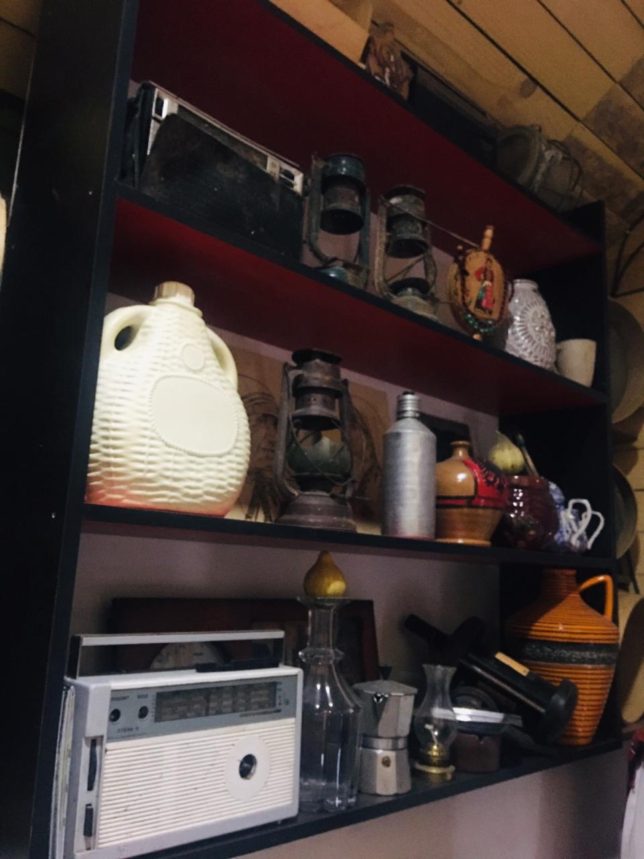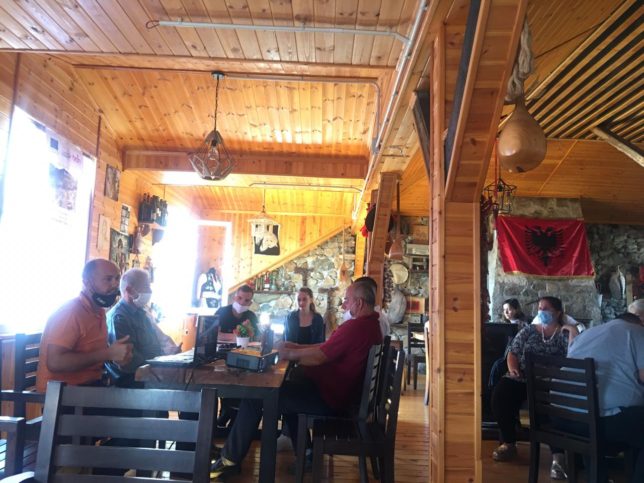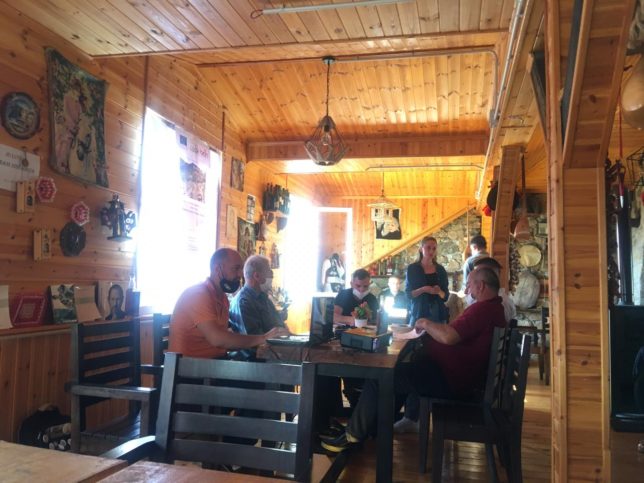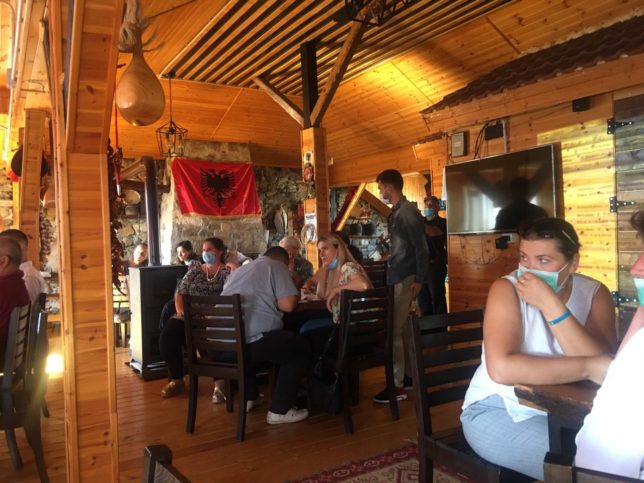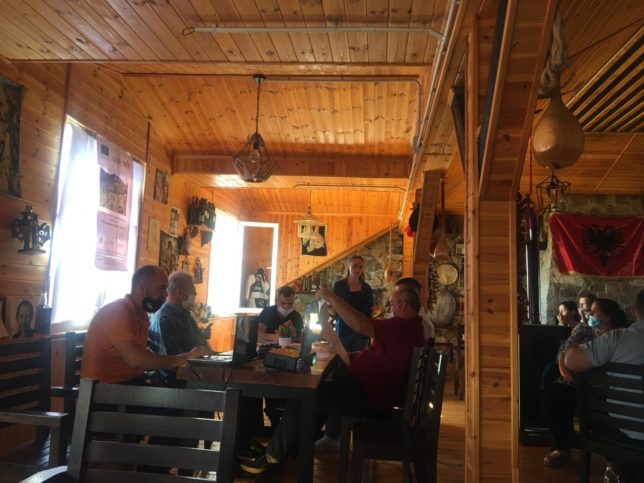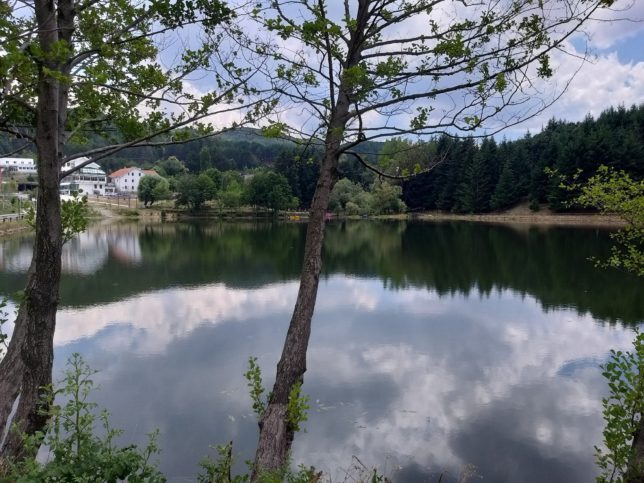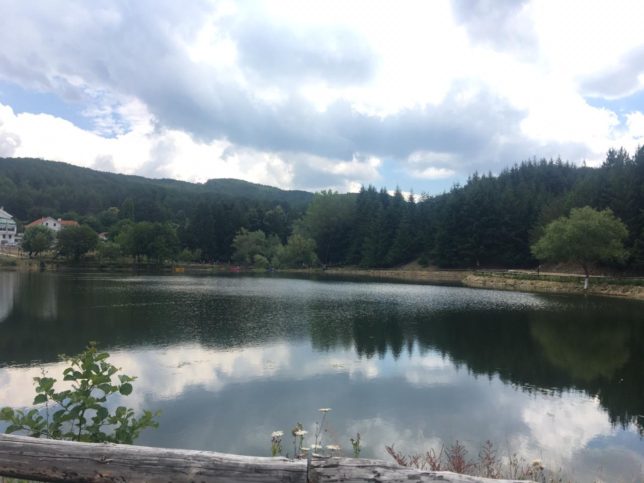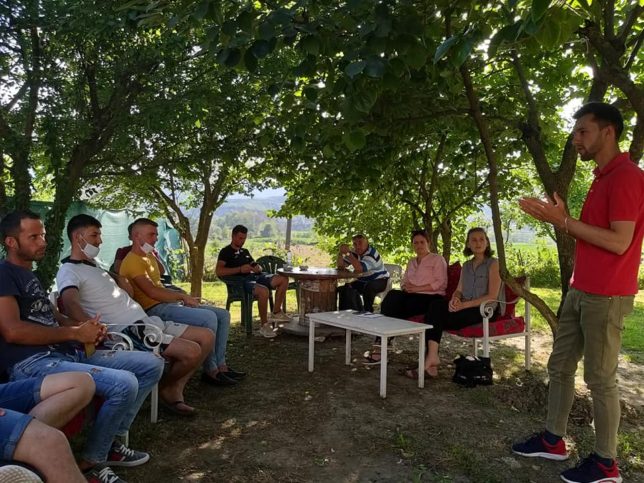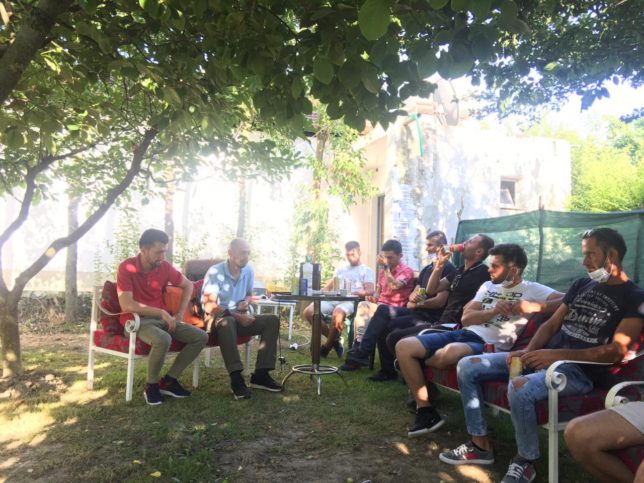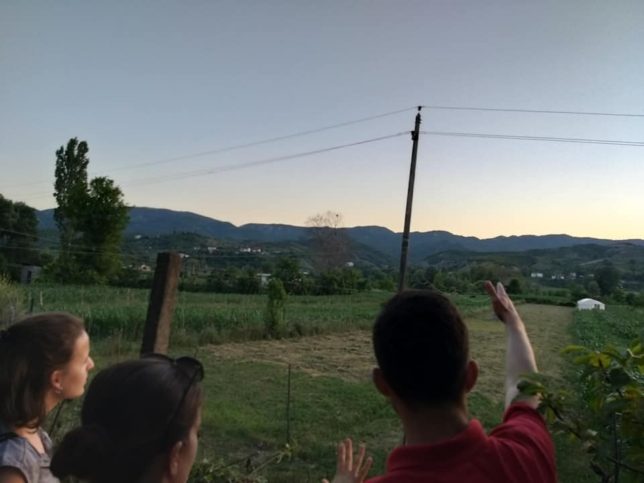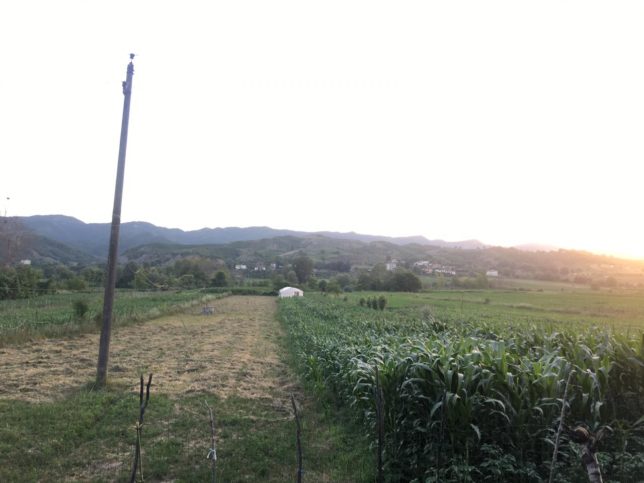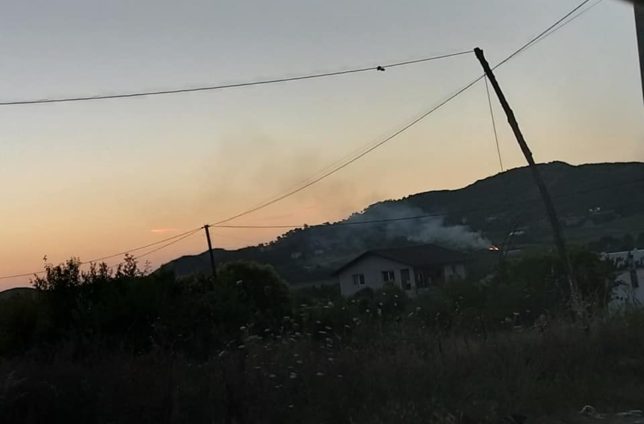On 15 November 2020, IEP project team conducted a field expedition to locate a suitable area for the ex situ propagation of Tulipa albanica, outside its small area where it occurs. Seeds had been collected earlier in September and October. Due to climate and weather effects, the flowering and seed production of Tulipa albanica was very low this year. The site was chosen by analyzing the similarity of elements with the habitat of Tulipa albanica, like orientation, soil, geology, altitude and risk factors stemming from human activity. The new site is 6-7 km far from the original site of Tulipa albanica, close to the future protected area of Munella. Around 200 seeds were planted in 4 terraces prepared by mimicking the habitat where Tulipa albania grows. If the germination of the seeds and further growing of the plants will be successful, this will be the first small sub-population located 6-7 km far from the actual population.
Author: IEP
IEP celebrates World Vegan Day
IEP celebrates World Vegan Day with a symbolic protest: a ride to show the link between meat consumption and climate crisis.
Gathering facts on climate crisis in Darëzezë, Fier
In this material we try to present some of the climate change consequences on the coast of Darëzeza in Fier. As in many areas of the Albanian coast, the effects of climate change threaten nature, tourism, agriculture, water and human life!
Act for climate: Darëzezë, Fier
Youth of Fier, Hope for the Climate! This Friday of Climate, 4 September 2020, the team of the Institute of Environmental Policy (IEP) in cooperation with the Youth Center Epoka e Re, held a climate discussion activity with the youth of Fier within the Action for Climate campaign. About 50 young people were introduced to the importance of man in generating greenhouse gases on the one hand and the opportunities to curb climate change on the other. Considering the lack of attention to the climate crisis over the years, it is incredibly exciting to see active young people passionately discussing the protection of nature and man from the effects of the climate. The activity took place in Darëzeza, an area with high biodiversity where you can still see some natural formations such as sand dunes. Young people are aware of this natural opportunity available to them that although it has escaped concreting, Darëzeza coast is still threatened by climate change.They welcomed the proposals of the Albanian Green Agreement proposed by IEP as one more guarantee for the future of our country, joining millions of young people around the world as climate activists in the movement against climate change and the demand that humanity should take urgent measures to reduce CO2 emissions into the atmosphere.
Evidence of climate change in Seman estuary and Karavasta lagoon in Albania
Albania is one of the most affected countries in Europe by climate change, due to the severity of impacts, and low human and infrastructural capacities to adapt to these impacts. In a situation like this the Institute for Environmental Policy (IEP) is fully engaged on the topic of climate change, monitoring several points in Albania, defined as sensitive, and using the information in the awareness campaign on the climate crisis and ways how to mitigate it. Recently, due to the missing data, they decided to inspect the situation in the Karavasta Lagoon and the nearby Seman estuary.
Karavasta Lagoon is one of the most important lagoons in Albania, as the largest in the country and one of the largest in the Mediterranean Sea, spanning over the area of 42 km2. The lagoon is located inside the boundaries of the Divjake Karavasta National Park and is recognised as a wetland of international importance by designation under the Ramsar Convention as well as Important Bird Area. The lagoon is monitored regularly by environmental inspectors, but the nearby sites like the Seman estuary, south of the National park, is left in the dark.
For that reason, IEP team on 26th June took the initiative to monitor the climate affections on this site and evidence it. With the support of SEENET subgrant they filmed the condition of lagoons and wetlands along the coast and produced a video about climate change in Seman estuary.
The video presented salinization of the estuary and partial desertification in many sites which raised the attention to think that the climate effects may start kilometers away from the coast and represent a direct threat to the agriculture and biodiversity nearby. In the area around 240 species of birds have been encountered throughout the year, which lead to development of birdwatching as an ecotourism type in the recent years.
On the coast the advancing of the sea is obvious and together with the dead-tree trunks inside the water shows the similarity with other parts of the Albanian coast affected by climate change like in the lagoon on Kune Vain in the north.
Besides natural pressure to flora and fauna the estuary is full of waste, one part thrown in the estuary and the rest brought by the Seman river. People living off fishing, livestock and agriculture have harder time to survive as temperature increases, sea rises, plastic piles up and vegetation vanishes.
That is why the documentation is very significant as only with real time monitoring and presenting the current situation to all people, can we realise the climate crisis is not a far away problem. Then people in the region can relate more closely to the problem of climate change and its consequences and choose to make changes as well as to support them.
Protest with shoes
On Friday, 24 July 2020, IEP organized a protest with shoe, to demand climate action in line with millions of people across the globe who held similar protests, demanding climate action. Due to the Covid-19 pandemic, protests were banned, but not shoes. Nevertheless, police forced the protest to remove the shoes and posters, and to the tens of people who were wearing masks and keeping distance, to leave the protest.

Burning of wetlands as a major threat to ecosystems and climate
IEP visited the Domni swamp by the end of July 2020, to find out that offenders had set the swamp on fire, apparently to create pastures for cows. The fire has had devastated effects on the ecosystem, and pumped CO2 in the atmosphere. The area is also a protected area, but apparently there is no supervision. Environmental crime has become rampant in Albania, and has gone unpunished.
Supporting and promoting rural circular economy in Puka Municipality
On Friday 17 July 2020, IEP team held a meeting with enterprises in Puka which deal mainly with accommodation, culinary, crafts, and harvesting and processing of wild fruits. These are important enterprises for the area, as they employ young and marginalized locals. The above enterprises showed their interest in embracing circular concept, which also create a green image that positively influenced their clients. Pemla company presented their products and circular model they have created in Albania.
Climate strike in Albania
Climate strike does not have holidays! IEP volunteer, Suela Muhametaj is joining Greta Thunberg this Friday to convey the message that the heatwave which has engulfed Albania these days is connected to the climate crisis, and we need to take urgen measures!
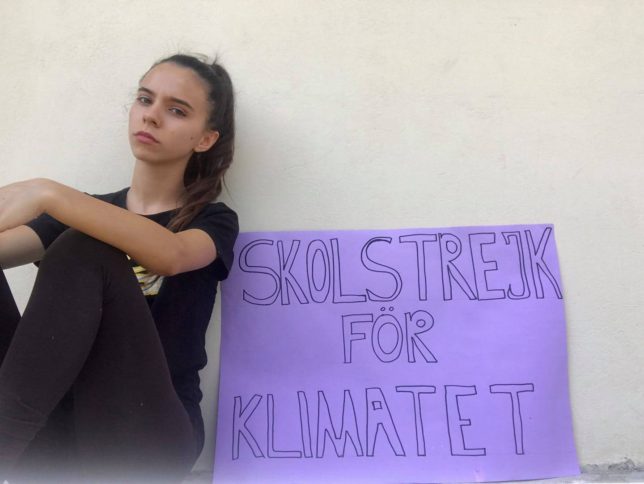
Act for Climate – Baldushk
On Friday, 3 July 2020, IEP team met with Baldushk youth. Baldushk is an agrarian area, known also as the granary of Tirana. Participants came from different sectors, such agriculture, animal husbandry, and manual labor. The meeting was focused on local climate crisis issues in relation to the bigger climate crisis. Water shortage is the main climate impact in Baldushk, exacerbated by water mismanagement. Other related issues are deforestation, soil erosion, and a lack in rainwater capture and composting of organic waste.
Local youth are eager for change, as they do not want to emigrate abroad, a perspective which is quite often found among rural youth.
Green policies should be demanded, to achieve sustainability and combat climate crisis. Smart agriculture and protection of biodiversity are key in combating climate crisis and guaranteeing continuation of villages and towns in these rural areas.
Participants congratulated the team for the activity, and demanded more similar activities in the near future.
This activity was implemented with the support of Heinrich Böll Stiftung.


